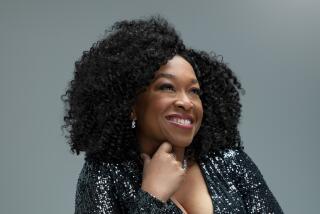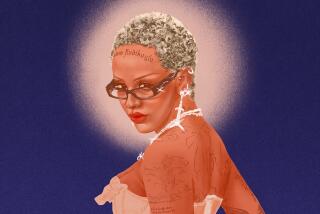He’s Fashionably Fly
- Share via
Loud clothes, a cartoonish smile, endless energy, irresistible grooves, free-flowing dreadlocks and intense party raps--that’s the recipe that’s made Busta Rhymes one of hip-hop’s most recognizable and significant artists. Whether giving Martha Stewart a jolting Ebonics lesson at this year’s Grammys, donning a mariachi outfit with his extended rhyme family, the Flipmode Squad, at the MTV Video Music Awards or rapidly rapping on his tightly constructed dance-floor anthems, the 26-year-old New York rapper always leaves an impression.
Indeed, his first two albums--1996’s “The Coming” and 1997’s “When Disaster Strikes”--each sold more than 725,000 copies. Rhymes, whose real name is Trevor Smith, talked about his image and his music as he prepared for the release this week of his third solo album, “Extinction Level Event (The Final World Front)”--one of the season’s most anticipated hip-hop collections.
Question: You design a lot of the crazy outfits that people associate with you. How does that fit into your image, and how important is it for people to recognize you by your clothing?
Answer: It’s just a part of the importance of my image. Lyrics, rhymes, concept, performance are important. I understand that and I’ve mastered it. I’ve got a clothing line now, so what I wear now, it’s all a part of promoting my clothing line. It’s part business for me, but it’s also the pleasure of enjoying performing with fly clothes on.
Q: There’s a song on your album that features Ozzy Osbourne, and a lot of recent rap records feature either heavy-metal guitars or collaborations with rock groups. What does this say about rap’s growth?
A: Rap music is the only music that can take any other music and make it hip-hop. You can’t take hip-hop and make it any other music, though. You can sample from anything--folk music, country & western, opera, jazz--and make it bangin’ hip-hop. Before we were able to work with the rock stars and icons, we were working with them through samplin’. Banging drum sounds come from Led Zeppelin records and Black Sabbath records, ill horns come from jazz records, ill bass lines come from old soul joints. Hip-hop’s just a combination of everything.
Q: What about actually working with Osbourne?
A: It was just like working with any other artist. The only thing is that your anxiety level is at a whole ‘nother level because he is who he is. He’s from 30 years ago, as a professional artist, not just an artist trying to make music. That whole anxiety of working with an icon was weird. He was extremely professional. He came in there and chilled. He watched TV and relaxed until it was time to do his part. He did his part. He definitely was vibin’ with us because he was glad to see that everything turned out successfully at the end of the song. When we were playing it back, he was yelling and screaming with us.
Q: With many popular rappers taking extended periods of time off between albums, why did you decide to have one every year since 1996?
A: I just come up with songs that can’t sit around. I have a consistent work process and I’m constantly growing. The albums get better and it doesn’t make sense for them to sit around and lose out on their extreme effect ability. If I do a joint now and you put it out right away, it’s going to be most effective.
Q: Do you worry about overexposure? When is the right time to release a new album?
A: Any time is the right time if your music is blazing. When do people not want blazing music? There’s better times than others, but there’s never a bad time. *
More to Read
The biggest entertainment stories
Get our big stories about Hollywood, film, television, music, arts, culture and more right in your inbox as soon as they publish.
You may occasionally receive promotional content from the Los Angeles Times.










